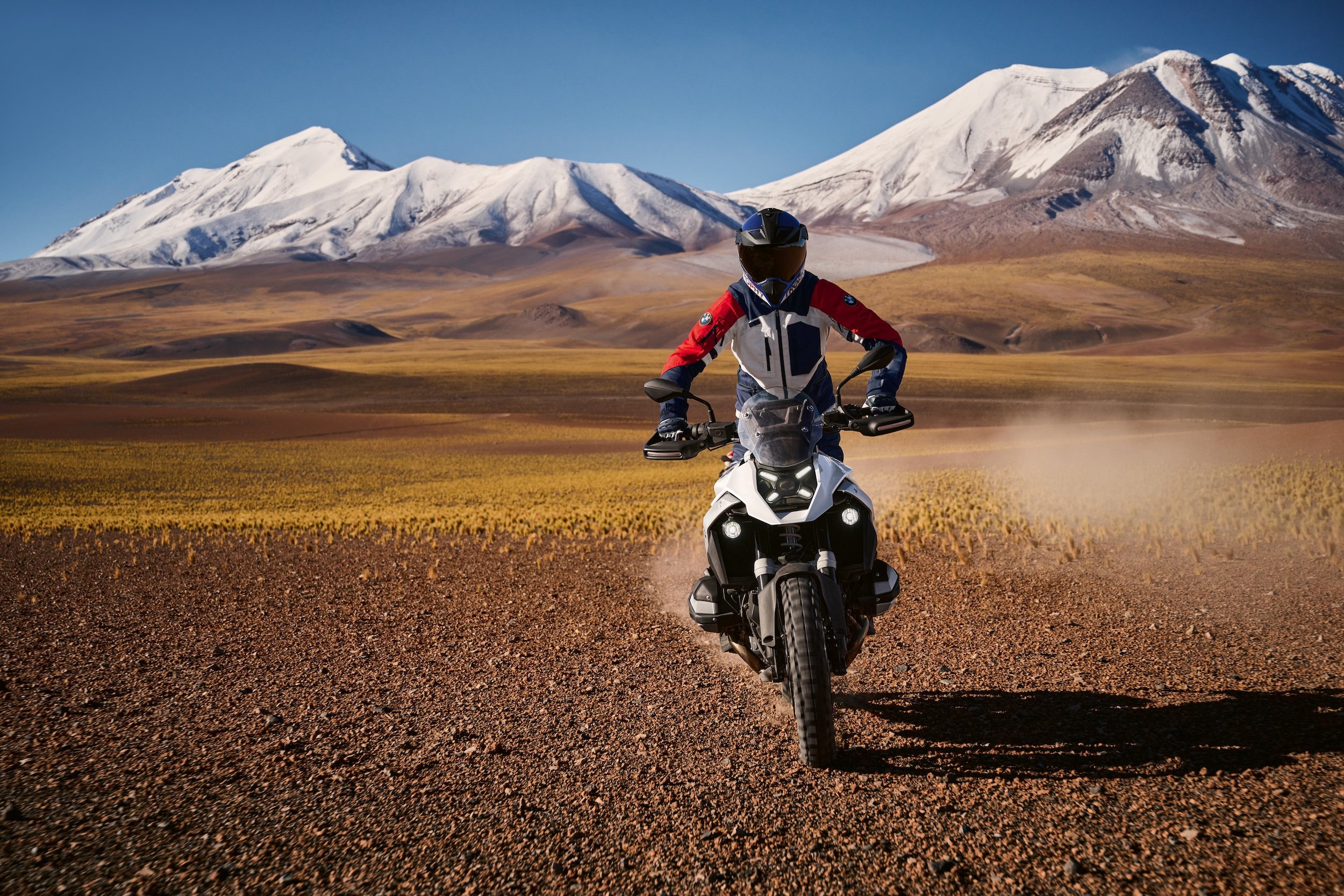BMW’s R1300GS has more power and less weight - Is it enough?
BMW recently celebrated its 100th anniversary of producing motorcycles. As a long-term BMW owner with 4 of their bikes, I’m one of the first to cheer them on. They also took the moment to introduce a new version of the most essential model in their lineup, the flagship GS.
Eyes are always on BMW when a new GS is released. It is often the first model with a new engine generation, and as their top-selling model, it’s critical to get it right. BMW essentially invented the Adventure motorcycle with the original R80G/S back in 1980 and has always been the one to beat in this category, so is the new R1300GS enough to keep them on top?
Looks
If you were to ask someone to draw an adventure bike, it’s likely what they came up with will look a lot like a GS from the past 20 years. It is an icon. Beginning with the R1150GS in 1999 that was featured in Long Way Round, every GS since has had an asymmetrical headline arrangement. A generation of motorcyclists thought the asymmetrical headlight and boxer engine defined the GS.
So when BMW introduced the new R1300GS with an X headlight, it was bound to be controversial. Some may like the modern look & certainly, from a lighting performance perspective, there are a lot of positives to it. They also streamlined much of the bike, smoothing out many seemingly arbitrary angles previous generations had.
I asked several other BMW riders if their impressions matched mine. The consensus has been that the bike looks more generic now. A substantial majority felt that the new R1300GS looks like a Suzuki V-Strom. Ironically, this was also the bike that first came to my mind when I saw the final version presented by BMW, so I wasn’t alone in that observation.
When the original asymmetrical headlight was released, there were similar adverse reactions to it, and those eventually turned more positive. I had the R1100GS that immediately proceeded with a square headlight, so my initial impression was the asymmetrical light looked weird back then, too. The new design may grow on people, too.
Weight
In their press statements, BMW made a big deal about not constantly adding weight and complexity to each new generation. Many long-term GS owners have complained about the ever-increasing weight, so it is a relief that this was addressed.
When the original R1200GS was released to replace the R1150GS, weight was also a significant advantage, losing nearly 45 pounds. So, hearing that the new GS lost weight vs. the previous R1250GS sounds excellent. But, as I own the last oil-cooled GS models and haven’t owned one of the water-cooled variants, I didn’t realize how much they had bulked up in the past two generations.
The new R1300GS comes in at 523 pounds wet, a substantial 26-pound savings over the R1250GS. But if we look back at the 2011 R1200GS, it was 505 pounds wet. Despite all the effort on streamlining, switching from a tubular frame, using a lithium battery, and smoothing out most of the edges, BMW offers a bike nearly 20lbs heavier than the bike featured in Long Way Down.
Middleweight adventure bikes are becoming more popular because they offer a lighter weight and cost option to the big bikes like the GS. For example, the KTM 890 Adventure R comes in around 474 pounds wet, 30 pounds lighter than the oil-cooled R1200GS, but with nearly the same horsepower. It is a compelling option, going down in size and weight but without giving up the power you are used to.
Should BMW have kept the new GS at the gym for a few more rounds and given us a bike weighing the same as the old R1200GS but with more power?
How about the competition?
Harley Pan America - 559lbs
KTM Super Adventure - 539lbs
Ducati Multistrada V4 - 529lbs
Triumph Tiger 1200GT - 529 lbs
BMW R1300GS - 523lbs
It’s the lightest but not by much. How about power?
Power
The R1300GS features ShiftCam like the previous generation, with two profiles for the cams that can change depending on the power demands. But total power has increased by 9 to 145HP. Given the competition for the high-end adventure bikes from KTM, Ducati, Triumph & Harley, BMW knew they needed to up the power. But was it enough?
Ducati Multistrada V4 - 170HP
KTM 1290 Super Adventure - 160HP
Harley-Davidson Pan America - 150HP
Triumph Tiger 1200 - 147HP
BMW R1300GS - 145HP
BMW comes in dead last on power even after the power bump.
Conclusion
The lowest power of all the main competition, it looks like a V-Strom and is still nearly 20 pounds heavier than the model that jump-started the adventure craze when featured in Long Way Down.
While many GS riders will never take their bikes off-pavement, let alone off-road, the appeal has always been that they could. Other brands tweaked their bikes to how they are used and focused on street performance. The new GS is bested in power to weight by both the KTM and Ducati by a decent margin and barely by the Triumph. Is the new bike enough to keep buyers returning, or will they grab a Ducati for better performance on the street? Is there a feeling beyond the spec sheet that will keep the GS at the top, or has BMW jumped the shark?
I suspect many riders will be coming to dealerships in the coming months to see the new GS in person, swing a leg over, thumb the starter, and take it for a ride. Only then will we know if the changes in the new R1300GS are enough to keep it on top?
I’ll be eager to try the new bike out like everyone else… hoping my initial impressions were wrong and the special sauce of the GS lives on in the R1300GS.

